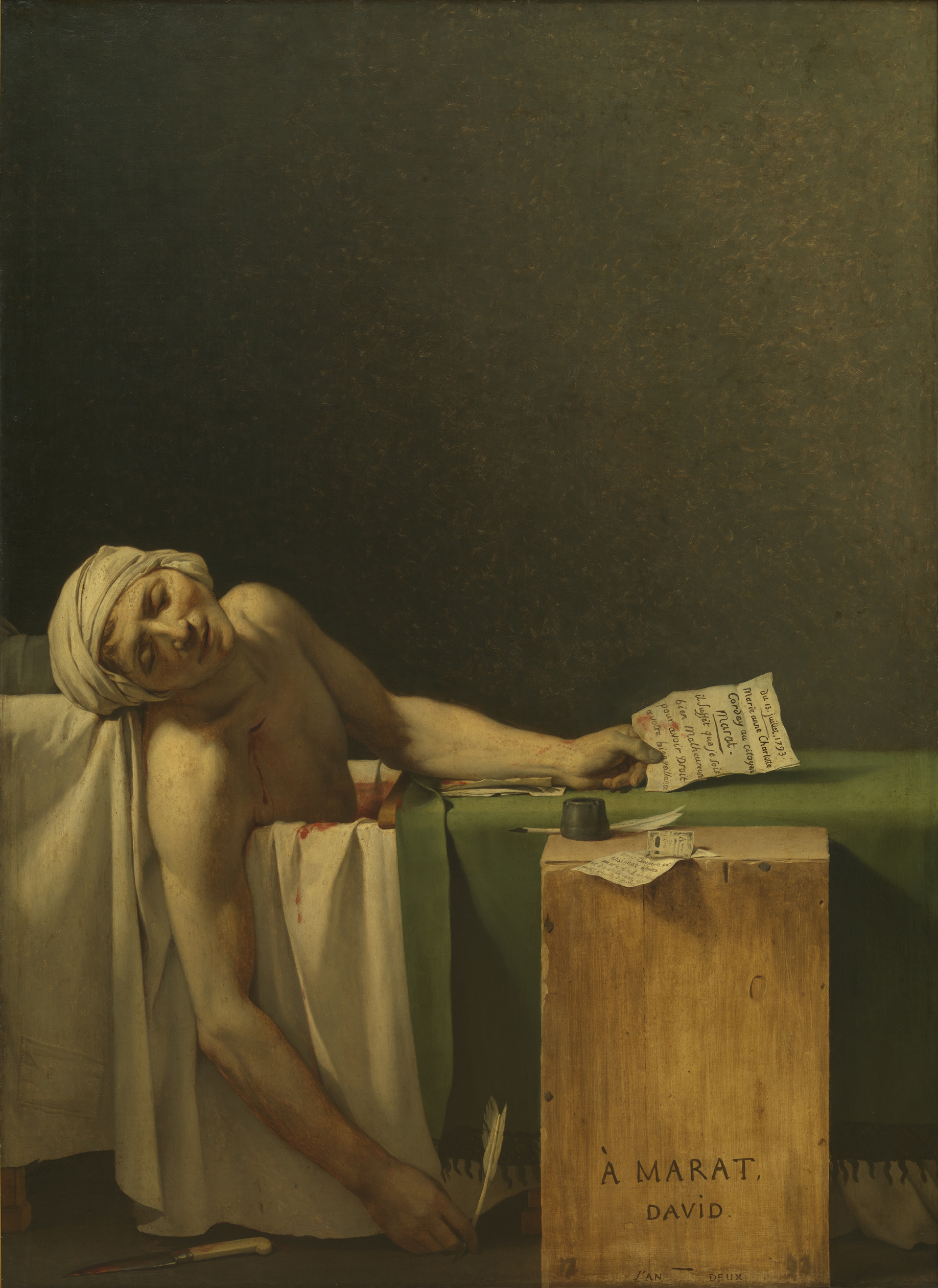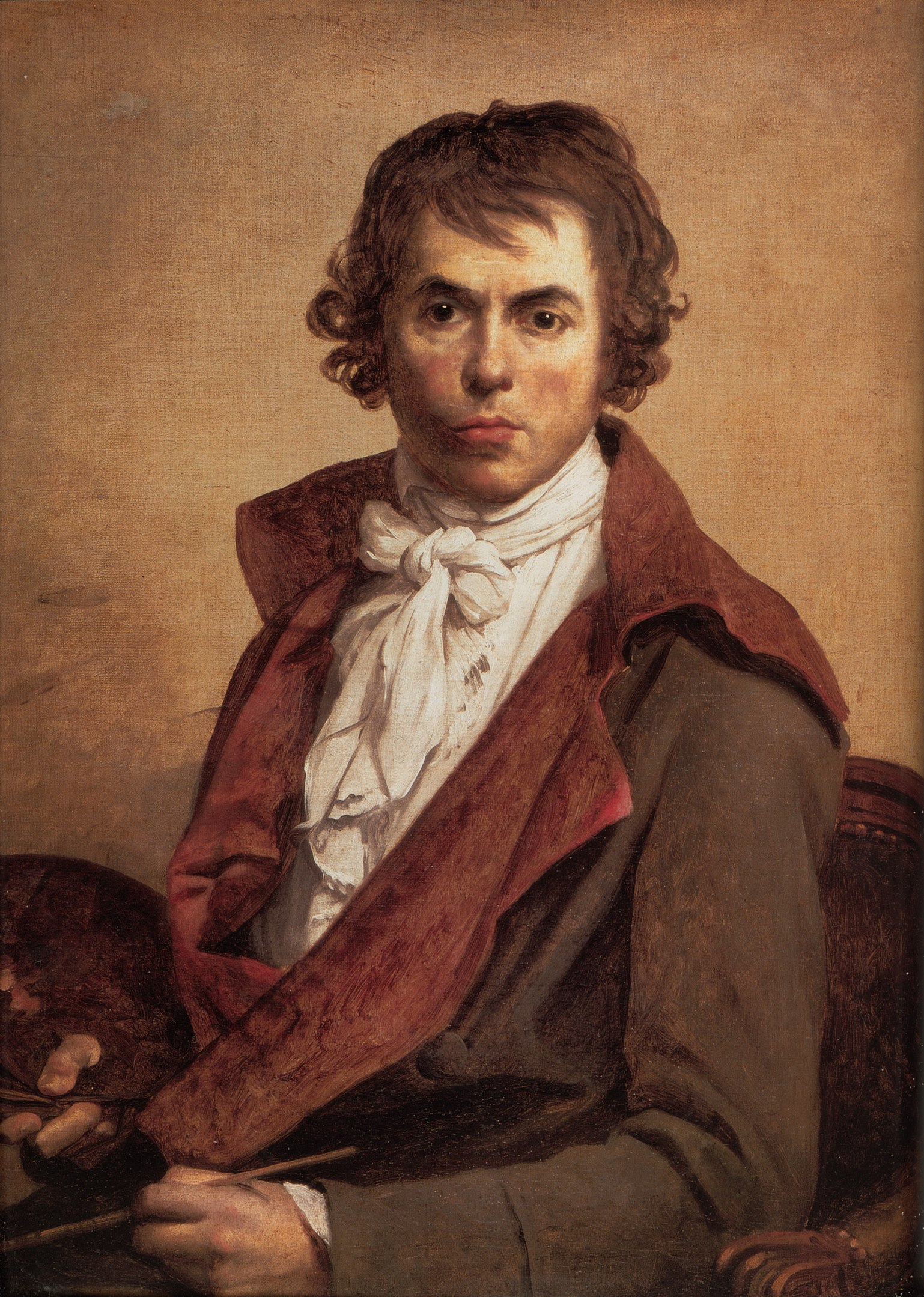Today, thanks to the Royal Museums of Fine Arts of Belgium we present to you one of the most famous paintings in the world. At the same time, it is the last masterpiece from their collection which we are presenting during our special month with the museum. Enjoy :) And, Happy Halloween!
Paris, Saturday, 13 July 1793. At 7.15 p.m., after a brief altercation with the victim’s girlfriend, Simone Evrard, Marie-Anne Charlotte Corday was admitted to the room of Jean-Paul Marat at number 30 rue des Cordeliers. Shortly before, she had bought a large knife in a store near the Palais-Royal. She skilfully planted it into the chest of the politician and publicist, who was in the bath at the time in order to alleviate the pain caused by his skin disease. The aristocratic Charlotte Corday was a fervent royalist from Caen who had got it into her head to rid the world of the agitator Marat. She was arrested immediately after the murder, and after a summary trial sentenced to death, and guillotined. Since September 1789, Marat had published the paper ‘L’ami du peuple’, and was highly popular. The paper’s policy was hard line and ruthless. The political propaganda opportunities of the assassination did not go unnoticed, and the National Convention requested Jacques-Louis David to immortalize Marat on canvas. At that time, David was not only the most prominent French artist, but also a close personal friend of Marat, a member of the revolutionary council and the president of the Jacobins’ Club. As members of the Convention, both men had voted in favour of the death penalty for King Louis XVI. Of a Neoclassical artist one expects subjects and scenes referring to classical Antiquity and the civic virtues of the Roman Republic. Yet, nothing could be further from the truth in this particular case. David placed a contemporary subject in a contemporary setting. ‘I thought it would be interesting to show him as I found him, writing for the happiness and well-being of the people’, David said. And while the classical hero is brought up to date, he is not trivialized. This is why David limited the recognizability and ‘tangibility’ to the bare minimum of the subject, Jean-Paul Marat, and that which made him a hero. There is no living room, assassin, friend – male or female – to place the subject into everyday reality. There is no costume to date the scene in time: Marat is naked. Only a few fragments of his revolutionary activity (writing utensils), altruism and public-spiritedness (the letter), suffering (the bath), and heroic death (the bloodstained knife) combine to depict Marat as the generous hero who is willing to sacrifice his life to achieve his revolutionary ideals.
Text: Frederik Leen © Royal Museums of Fine Arts of Belgium, Brussels
P.S. What does the French Revolution have to do with Coldplay? Click here to find out. :)
P.P.S. Check out our DailyArt Prints here. :)


 Jacques-Louis David
Jacques-Louis David